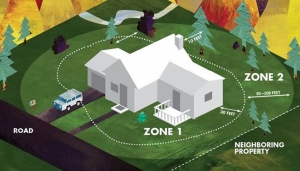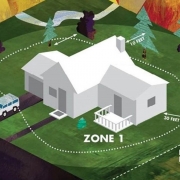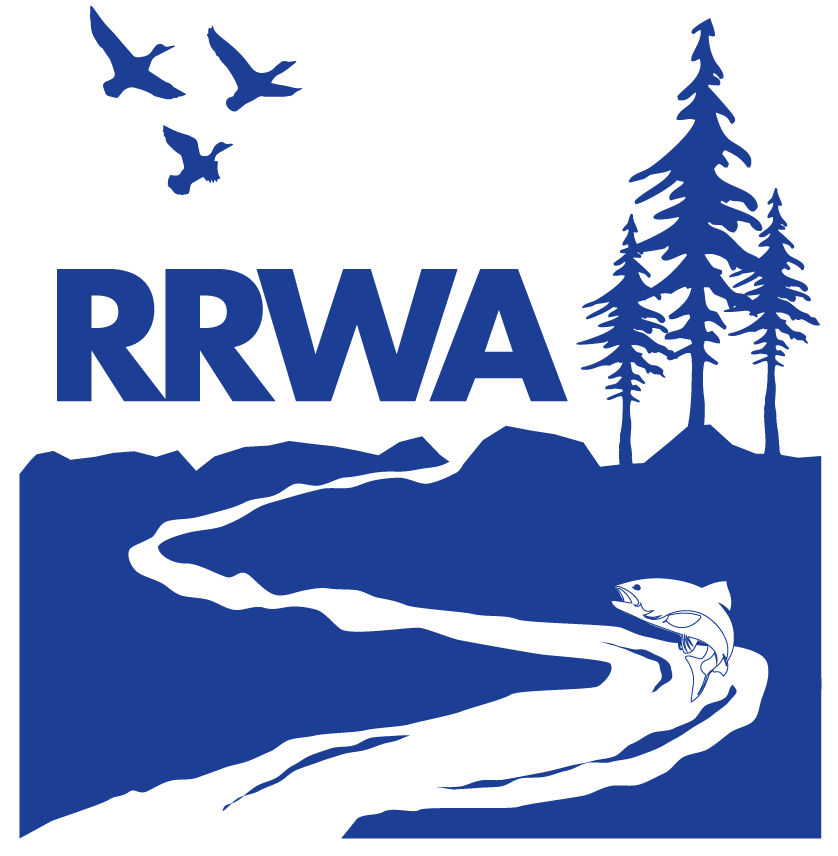Living With and Preparing For Wildfires
Living with and preparing for wildfires is essential for communities in Northern California. The Russian River Watershed has learned this lesson intimately during the Tubbs Fire (2017), Pocket Fire (2017), Kincade Fire (2019), and Walbridge Fire (2020).
As the tradition of spring cleaning and planting begins, our community should consider fire preparedness. Fire preparedness is most successful as a layered approach between individual residents and the larger community. This article will focus on individual preparedness for fire, focusing on yard and landscape preparation. Through scientific and practical study, yard preparation has come to be called Defensible Space.
Defensible Space refers to the buffer area around a structure that can be maintained to decrease the spread of fire. This buffer area can stop or slow the spread of fire and protect the structure from catching fire – either from embers, direct flame contact or radiant heat. The latest information published by the state legislator (Assembly Bill 3074) categorizes Defensible Space into three zones for proximity to the structure:

Defensible Space graphic shown with permission from Cal Fire https://www.readyforwildfire.org/
- Zone 0 – “Ember resistant zone” located 0 to 5-feet away from the structure and wooden decks. The ember-resistant zone should be maintained to keep fire or embers from igniting materials that can spread to the structure. Cal Fire suggests the following maintenance measures:
- Use hardscape like gravel, pavers, concrete and other noncombustible mulch materials. No combustible bark or mulch
- Remove all dead and dying weeds, grass, plants, shrubs, trees, branches, and vegetative debris from yard and on structures (roofs and decks)
- Remove all branches within 10 feet of any chimney or stovepipe outlet
- Limit plants in this area to low growing, nonwoody, properly watered and maintained plants
- Limit combustible items such as outdoor furniture, planters, and fences
- Relocate firewood and lumber to Zone 2
- Consider relocating garbage, recycling containers, boats, RVs, vehicles, and other combustible items outside this zone
- Zone 1 – “Lean, Clean, and Green” located 0 to 30-feet away from the structure. Cal Fire suggests the following maintenance measures:
- Remove all dead plants, grass, and weeds (vegetation).
- Remove dead or dry leaves and pine needles from your yard, roof, and rain gutters.
- Trim trees regularly to keep branches a minimum of 10 feet from other trees and structures.
- Relocate wood piles to Zone 2.
- Create a separation between trees, shrubs and items that could catch fire, such as patio furniture, wood piles, swing sets, etc.
- Zone 2 – “Reduce Fuel” located 30 – 100 feet away from the structure to the property line, whichever is closer. Cal Fire suggests the following maintenance measures:
- Cut or mow annual grass down to a maximum height of 4 inches.
- Create horizontal space between shrubs and trees.
- Create vertical space between grass, shrubs, and trees.
- Remove fallen leaves, needles, twigs, and branches to a depth of 3 inches.
- All exposed wood piles must have a minimum of 10 feet of clearance, down to bare mineral soil, in all directions.
Planting and maintaining firewise landscaping can seem like an impossible balance in the arid west. The aim for water conservation pushes our communities to maintain a hardy and seasonal garden which can seem counter to water flush fire-resistant plants. Fortunately, there is some overlap between drought tolerant and fire-resistant plants for the Northern California climate. Cal Fire and Fire-resistant planting resources suggest the following plant recommendations:
- Select high-moisture plants that grow close to the ground and have a low sap or resin content.
- Select plants that have little dead wood and tend not to accumulate dry, dead material within the plant.
- Select fire-resistant shrubs such as California Fuchsia, Sage, California Lilac, Ornamental Strawberry, California Red Bud, succulents, and Society Garlic.
- Select trees like maple, poplar, and low water fruit trees (Pomegranate, Strawberry Tree, and Pineapple Guava) that are less flammable than pine, fir, and other conifers.
- Hydrate plants with a water-wise irrigation system.
- Use noncombustible mulches near to the house.
- Maintenance is key, fire resistant doesn’t mean fireproof.
Additional recommendations include using plants that are native and support the local climate needs such as those recommended by the California Invasive Plant Council (https://www.cal-ipc.org/), and the CalPoly Tree Selection Guide (https://selectree.calpoly.edu/). The Russian River Watershed Association wishes you a productive and safe spring season.
This article was authored by Michele Miller, West Yost Associates, for The City of Cloverdale, on behalf of RRWA. RRWA is an association of local public agencies in the Russian River Watershed that have come together to coordinate regional programs for clean water, habitat restoration, and watershed enhancement.




